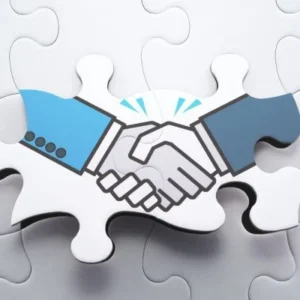The recent decision by the United States to cut foreign aid has exposed two contrasting perspectives on official development assistance (ODA). From a largely Western standpoint, the cuts are viewed as a looming humanitarian crisis, while African and diaspora voices see the reductions as an opportunity to break free from dependency and chart an independent path toward economic transformation. While investment-driven “trade, not aid” approaches promise a more sustainable framework for ODA, the abrupt cuts threaten essential support, raising questions about whether aid should be understood primarily as a moral obligation or a tool for systemic development.
Although the US Congress approved President Trump’s $9 billion rescissions package, it protected critical programs like PEPFAR, which has saved millions of lives in Sub-Saharan Africa since 2003. The partial continuation of health assistance is welcomed as philanthropic organizations, such as the Bill & Melinda Gates Foundation, commit to bridging gaps left by reduced aid. Nevertheless, Africa faces an estimated $194 billion annual development financing gap until 2030, a deficit that philanthropy alone cannot fill. Traditional ODA approaches often perpetuate dependency, impose top-down solutions, and marginalize local agency, highlighting the limitations of existing aid models.
African responses to aid reduction emphasize the opportunity to redefine aid as partnership rather than charity. Former African ambassadors and policymakers argue for long-term financing strategies that promote industrialization, structural economic growth, and local ownership. However, the continent’s structural dependence on external funding, limited fiscal space, and vulnerability to debt constrain these ambitions. While the narrative of partnership signals an important shift, it may overestimate African agency within a global system still dominated by Western influence.
Global dynamics are shifting, with strategic competition reshaping aid landscapes. China and Gulf states are scaling up financing to Africa, blending grants, concessional loans, and investments in infrastructure and energy, often securing resource-linked returns. In contrast, European and US aid approaches are increasingly tied to geopolitical and market considerations. Programs like the EU’s Strategic Compass and Global Gateway integrate development finance with security and competitiveness objectives, though implementation gaps and bureaucratic processes have limited their effectiveness compared with more tangible Chinese projects. Aligning aid with African industrial priorities, enhancing local innovation, and improving market access could strengthen both African development and European strategic interests.
European and transatlantic actors have the potential to leverage ODA strategically to support African industrialization, renewable energy, and value-added production. By using instruments such as the European Investment Bank and development finance institutions, Europe can offer transparent, sustainable financing alternatives, strengthen institutional capacity, and complement infrastructure investments from other actors. Coordinated efforts could include co-designed industrial policies, blended finance for underinvested sectors like water and public health, and support for African-led mechanisms such as the African Credit Rating Agency to reduce borrowing costs.
Ultimately, ODA is a multifaceted tool that requires sustained commitment to generate structural transformation. While humanitarian aid addresses immediate crises, systemic development demands long-term investment aligned with African priorities. African partners increasingly measure cooperation by its ability to deliver lasting efficiency and transformation, a standard European and transatlantic actors must embrace. Innovative measures, such as sovereign debt alleviation and strategic industrial investment, are crucial to building a resilient, mutually beneficial global development framework. This approach positions ODA not as charity, but as a foundation for a more equitable and strategic multilateral order.







